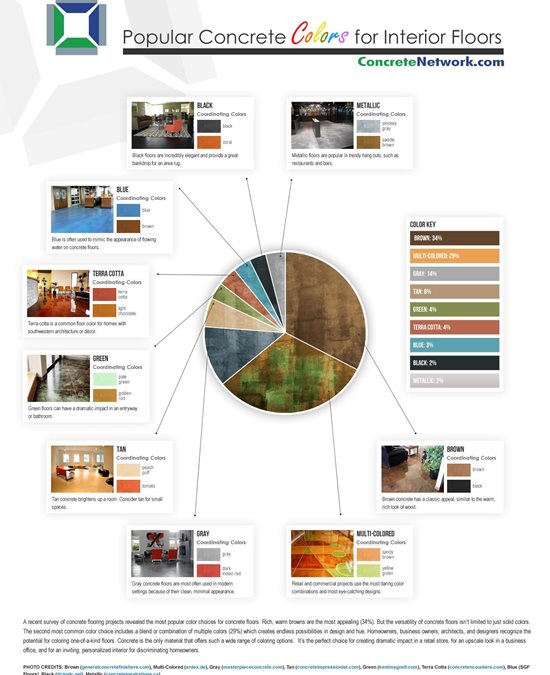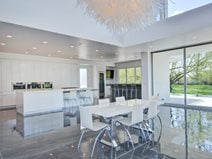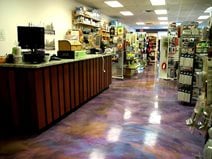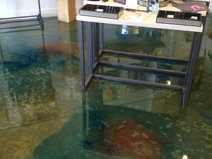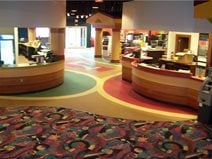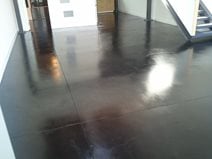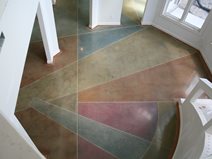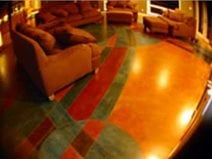When it comes to concrete floors, your color options abound. Stains, dyes and coatings make it possible to turn plain-gray concrete into nearly any hue imaginable, from basic brown to vibrant shades of purple, blue and fire-engine red. Learn about the most popular color options for concrete floors, and see projects showcasing the wide range of looks you can achieve. (Find out where to get color inspiration for concrete floors.)
Brown
Gray
Tan
Green
Terra Cotta
Blue
Tips: Contact concrete floor contractors near you and ask to see color charts. They choices will vary based off what products they use.
Brown Concrete Floors
Although they don’t sound exciting, concrete floors in brown tones are by far the most popular color choice. Brown concrete floors provide the warm look of a wood floor yet are much easier to maintain. Plus the range of shades that can be achieved in the brown color spectrum is infinite, ranging from sandy beige to dark walnut. See these examples of brown concrete floor projects.
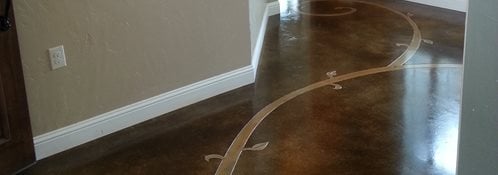
Dark Walnut Floor
Decorative Crete-Worx, Grand Prairie, Tex.
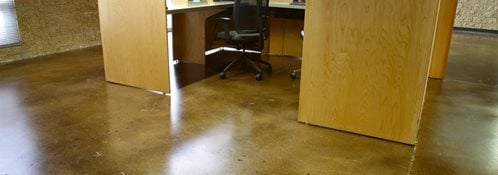
Rich Brown Stain
Life Deck Coating Installations, San Diego, Calif.
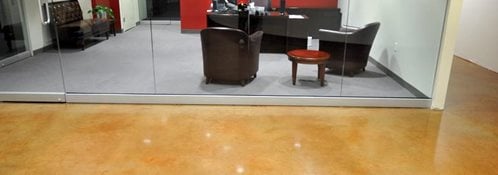
Dyed Floor in Driftwood
Concrete Concepts Inc., Hackensack, N.J.
Gray Concrete Floors
Gray is another popular choice for concrete floors, especially in modern homes, restaurants or businesses. The floors can be left their natural cement color, or colored to produce the perfect shade of gray, ranging from nearly white to a deep charcoal. Browse these pictures of gray concrete floors.
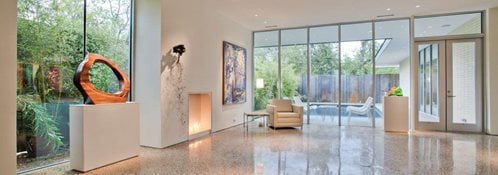
Uncolored Polished Floor
Floor Rescue, Dallas, Tex.
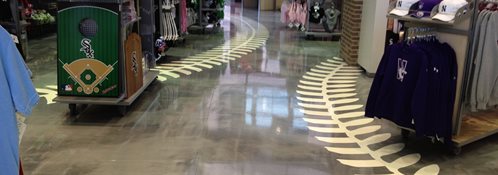
Metallic Gray Floor
CI Flooring, Inc in Crest Hill, Ill.
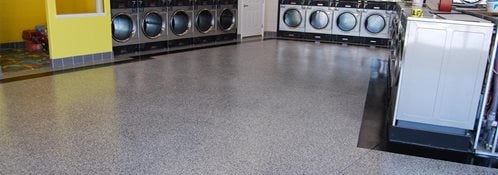
Light Gray Epoxy
Innovative Finishing, Knoxville, Tenn.
Check out these white concrete floors and more.
Multi-Colored Concrete Floors
Combining multiple colors is also an option for concrete floors. Colors can be swirled together to create a mottled effect or kept separate with a distinct pattern. Stencils can also be used to create unique designs with multiple colors. Browse a gallery of artistic concrete floors that use more than one color.
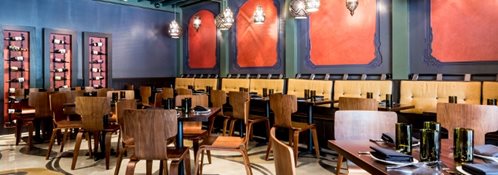
Floor Stenciled with in Obsidian and Henna
Hyde Concrete, Annapolis, Md.
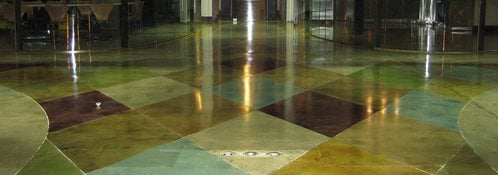
Multi-Colored Diamonds
Hyde Concrete, Annapolis, Md.
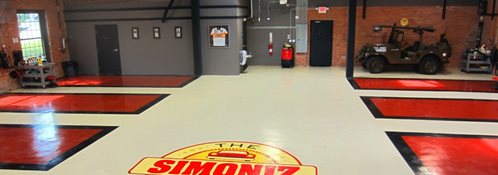
Pigmented Epoxy Coating
Custom Concrete Solutions, West Hartford, Conn.
